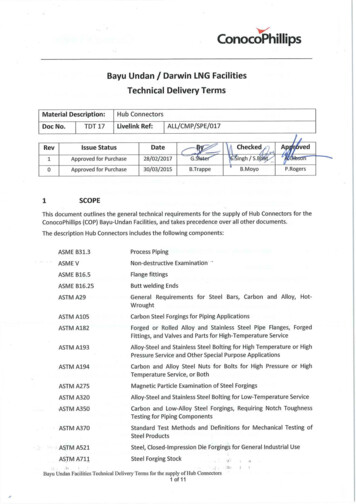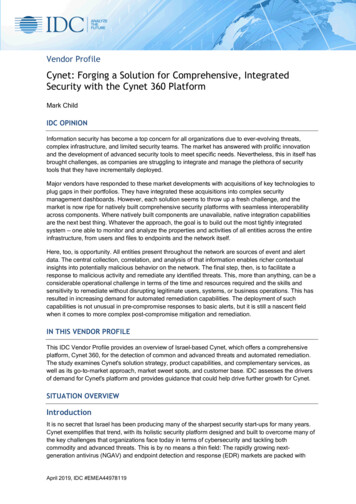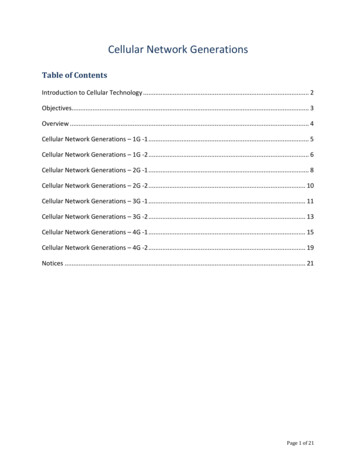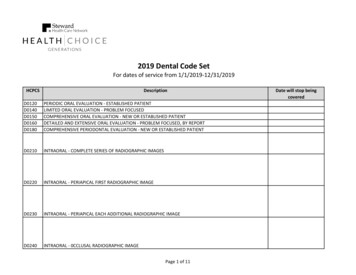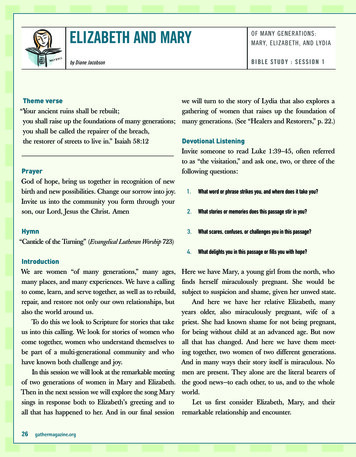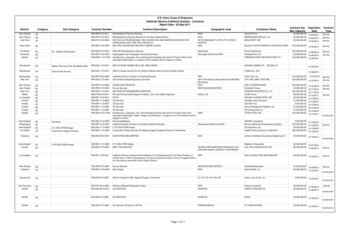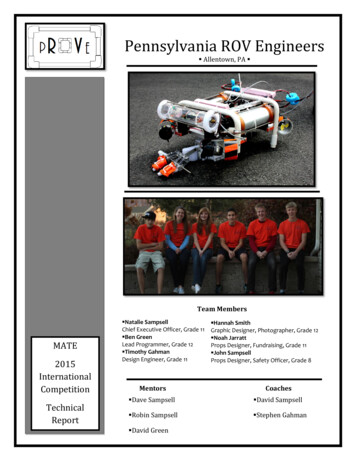
Transcription
Forging new generations of engineers
Dial Calipers
At the conclusion of thispresentation, you will be able to identify four types of measurementsthat dial calipers can perform.identify the different parts of a dialcaliper.accurately read an inch dial caliper.
Dial CalipersGeneral Information
Dial Calipers are arguably the most commonand versatile of all the precision measuringtools.
Engineers, technicians, scientists and machinistsuse precision measurement tools every day for: analysis reverse engineering inspection manufacturing engineering design
Dial CalipersFour Types of Measurements
Dial calipers are used to perform four commonmeasurements on parts
1. Outside Diameter/Object Thickness2. Inside Diameter/Space Width3. Step Distance4. Hole Depth
Outside Measuring FacesThese are the faces between which outsidelength or diameter is measured.
Inside Measuring FacesThese are the faces between which insidediameter or space width (i.e., slot width) ismeasured.
Step Measuring FacesThese are the faces between which steppedparallel surface distance can be measured.
Depth Measuring FacesThese are the faces between which the depthof a hole can be measured.
Note: Work piece is shown in section. Dial Caliper shortened for graphic purposes.
Dial CalipersNomenclature
A standard inch dial caliperwill measure slightly morethan 6 inches.
The blade scale shows each inch divided into10 increments. Each increment equals onehundred thousandths (0.100”).Note: Some dial calipers have blade scales that are located above or below the rack.
BladeThe blade is the immovable portion of the dialcaliper.
SliderThe slider moves along the blade and is used toadjust the distance between the measuringsurfaces.
PointerThe pointer rotates within thedial as the slider moves backand-forth along the blade.
Reference EdgeThe reference edge keepstrack of the larger increments(i.e. 0.100”) as the slidermoves along the rack.
RackThe gear-toothed rack is usedto change linear motion (slider)to rotary motion (pointer).
Dial CalipersReading the Inch Dial Caliper
The dial is divided 100 times, with each graduationequaling one thousandth of an inch (0.001”).Some dials also show “half-thou” (0.0005”)graduations.Note: Dial face divisions and increments are not standardized.
Every time the pointer completes one rotation, thereference edge on the slider will have moved thedistance of one blade scale increment (0.100”).
To determine the outside diameter of this pipe section,the user must first identify how many inches are beingshown on the blade scale.scale
1.000”The reference edge is located between the 1 and 2inch marks. So, the user makes a mental note 1inch.
1.000”0.400”The user then identifies how many 0.1” incrementmarks are showing to the right of the last inch mark.In this case, there are 4 or 0.400”.
1.000”0.400”0.037”Next, the user looks at the pointer on the dial to seehow many thousandths it is pointing to.In this case, it is pointing to 37 or 0.037”.
The user then adds the threevalues together 1.000”0.400” 0.037”1.437”
How wide is the block?
1.000”How wide is the block?
1.000”0.400”How wide is the block?
How wide is the block?1.000”0.400”0.002”
How wide is the block?1.000”0.400” 0.002”1.402”
Reading the Inch Dial Caliper Dial Calipers. The dial is divided 100 times, with each graduation equaling one thousandth of an inch (0.001”). Some dials also show “half-thou” (0.0005”) graduations. Note: Dial face divisions and increments are not standardized. Every time the pointer completes one rotation, the reference edge on the slider will have moved the distance of one blade scale .
